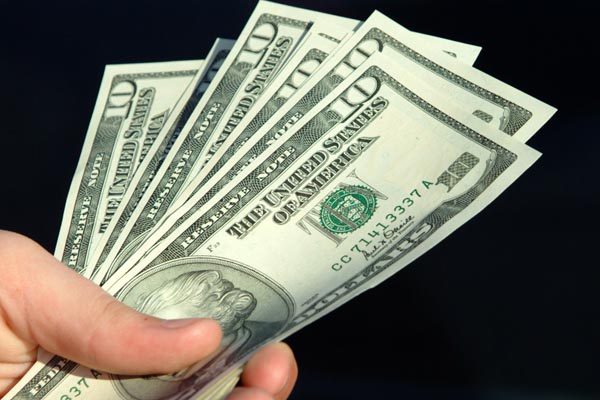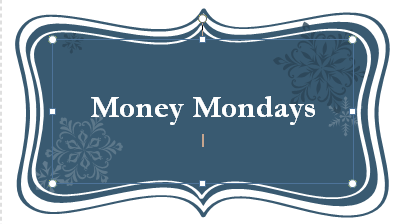I keep my budget in a spreadsheet that is stored on Google Docs so that I have easy access to it when I am online.
Every day I enter my receipts for the day so that I can keep track of where my money goes. I generally don’t use cash (well there is the RARE occasion when something happens at work….or I find money on the street) so I always have a receipt from a credit card that I can enter on my spreadsheet.
There are a few items that I will not have a receipt for, such as the payments to credit cards that I make through ING. These transactions get downloaded into Microsoft Money (and lately Quicken Online) and I just check those accounts and enter the transactions for the day.
 This way I can keep a daily log of my income and expenses so at any one point in time I know where my money is and where it should be going.
This way I can keep a daily log of my income and expenses so at any one point in time I know where my money is and where it should be going.
With the last paycheck I got a little bit of an increase. This amounted to a little over $100 more per check every month, after increased taxes etc. (teacher pay sucks!)
I rolled this ‘extra’ money into increased payments on every credit card and loan account in the form of a snowflake payment to each account. I kept my original payments in the ING account as they were originally so that I would not mess up my accounting. I then went into my Electric Orange account and added in a small payment that was going to be my snowflake payment for the month. These tiny snowflakes will eventually snowball into a bigger payment that is going to make those debts go down and cause me to pay less in interest.
I love using my Electric Orange account to be able to set up these flexible payments AND earn interest on my checking as well. I only keep a small amount in my checking account but it is still nice to see the little bit of interest build up at the end of the month.
My budget is almost at a zero base where I am allocating the extra money into a ‘snowball’ account that is currently set up as a savings account. This ‘extra’ money includes things like the income from this site through Adsense and other advertising because it is not constant money that is coming in. I currently have a $21 buffer in the budget where I have that amount of cash not accounted for. I am trying to decide on the best route to take with it as follows:
- Leave it unaccounted for in savings
- Budget it as a snowflake payment
- Budget it as a snowflake savings
- Let it build up and then use it to make a bonus credit card payment.
What do you think?
If you do not already have an account with ING then you can click on any of the links in this post that say ING and get your account today. Remember that you can get a bonus $25 for opening your account with $250 so save up that money and earn a 10% return on your money today!!!!!!





If what you mean by “zero base” is that you no money which is not allocated somewhere then I would suggest you use this $21 as “fun money”. We are much more likely to stay on point with our budgets if we have a little wiggle room!
@ Mary
I already have ‘fun’ money budgeted for in my ‘expenses’. 🙂
I am ALL wiggly!
Do you have the start of an emergency fund yet? That might be a smart place to put the excess. Isn’t it nice to have excess instead of a shortfall?
@ Karla
Yes I do have an emergency Fund started. It is being funded monthly from my paycheck and is listed as a bill on my spreadsheet.
Since you have those two categories covered, I’m guessing you have things like ‘upcoming taxes’ and ‘car repairs/maintenence’ covered too. Sounds like your budget is working well for you!
I’d put that excess into the snowflake savings fund and bung it onto the focus debt each month. The more you can pile onto that focus debt, the better!
Goood idea to control the budget else you wont have a cent.
Those are some great budgeting tips. I also keep a spreadsheet, but on a monthly basis.
Nowadays, internet is like part of our lives and it’s good to utilize it’s features. Creating a spreadsheet is a brilliant idea to control budget and keep track of things.
I agree with the emergency fund idea, actually – I used Dave Ramsey’s idea about taking the precise amount of cash out of the ATM that I budgeted for the week and only keeping a debit card around for absolute emergencies. Then, if I have any cash left over, I stash it in a jar that’s built up towards a fairly healthy emergency fund.